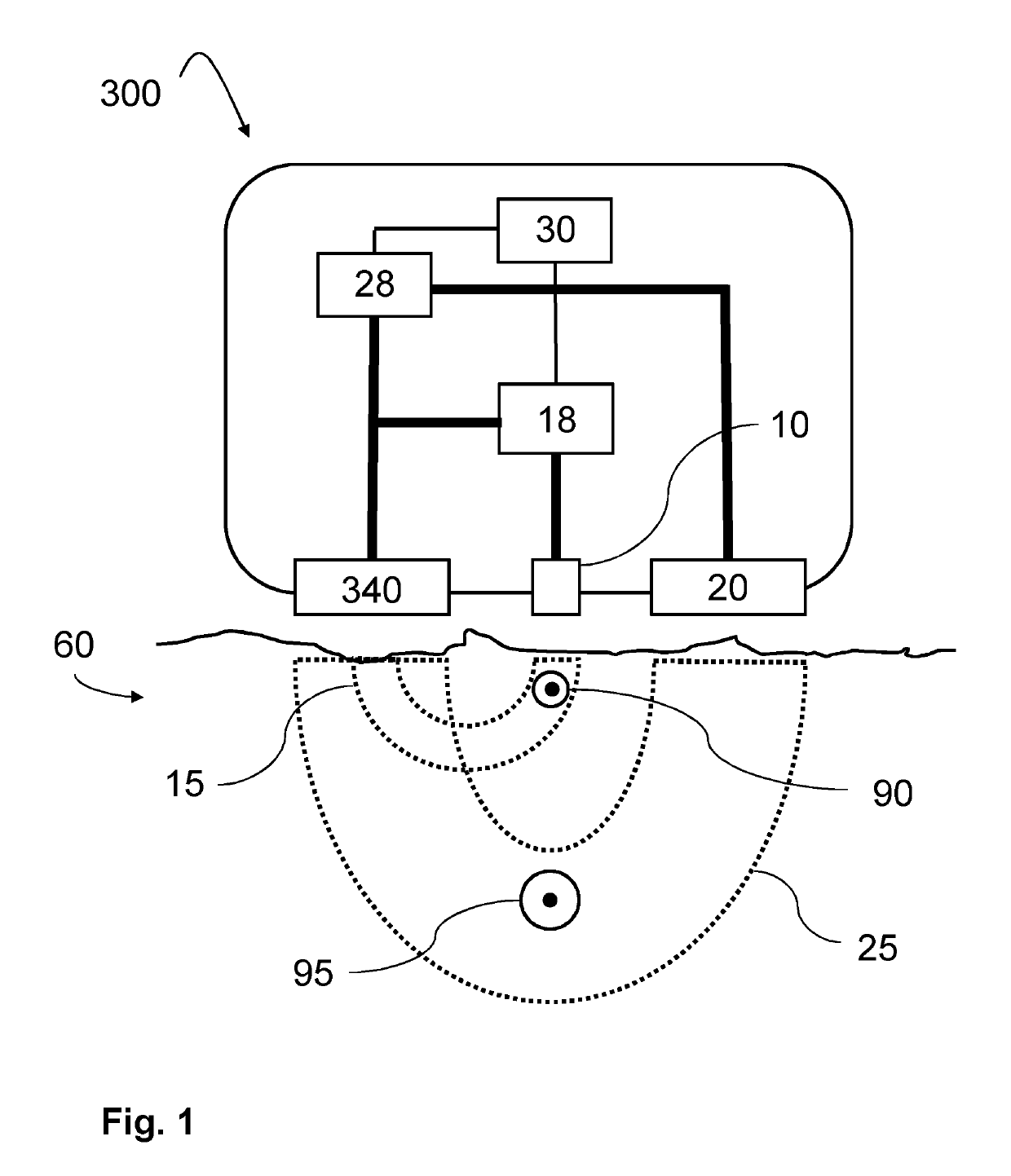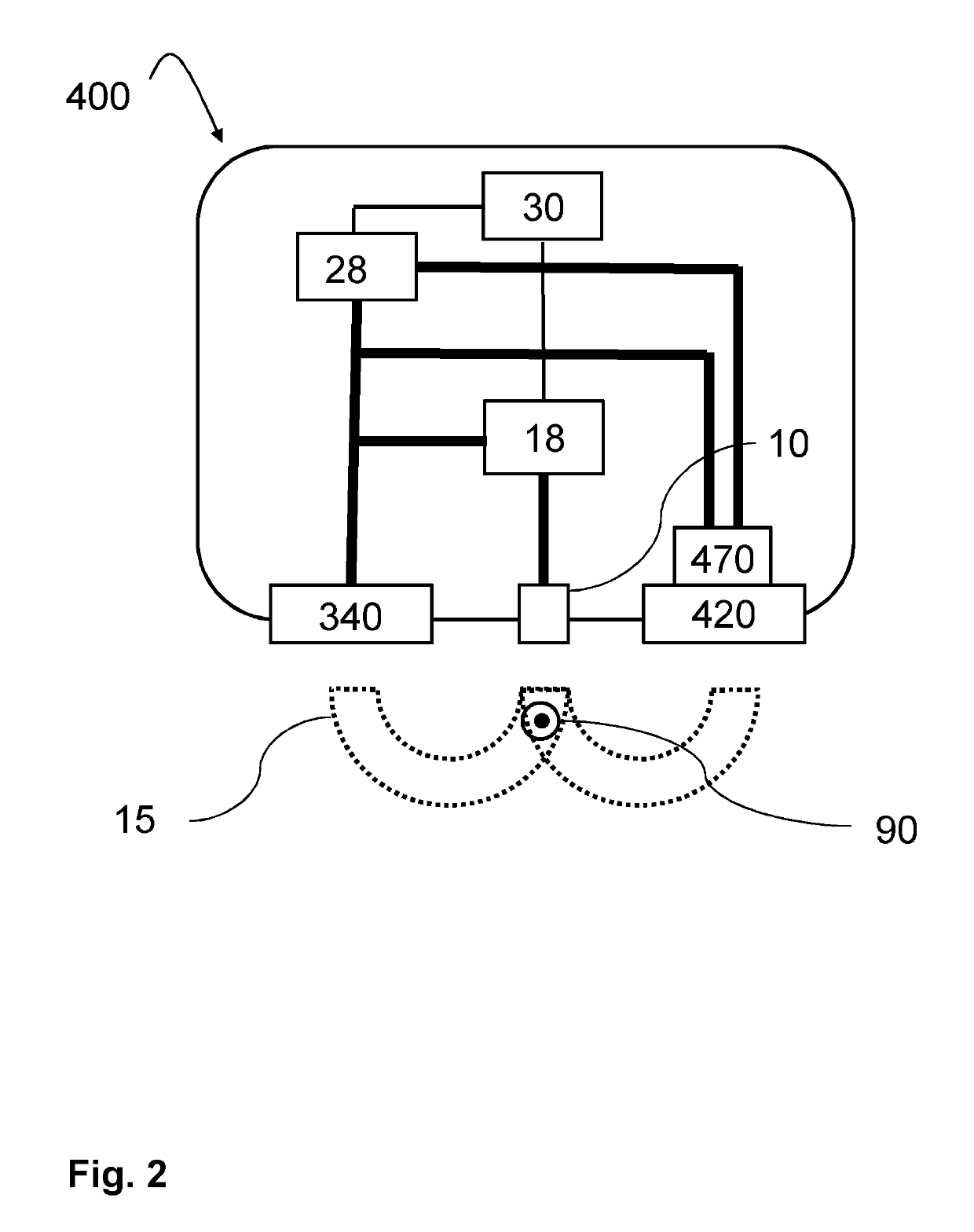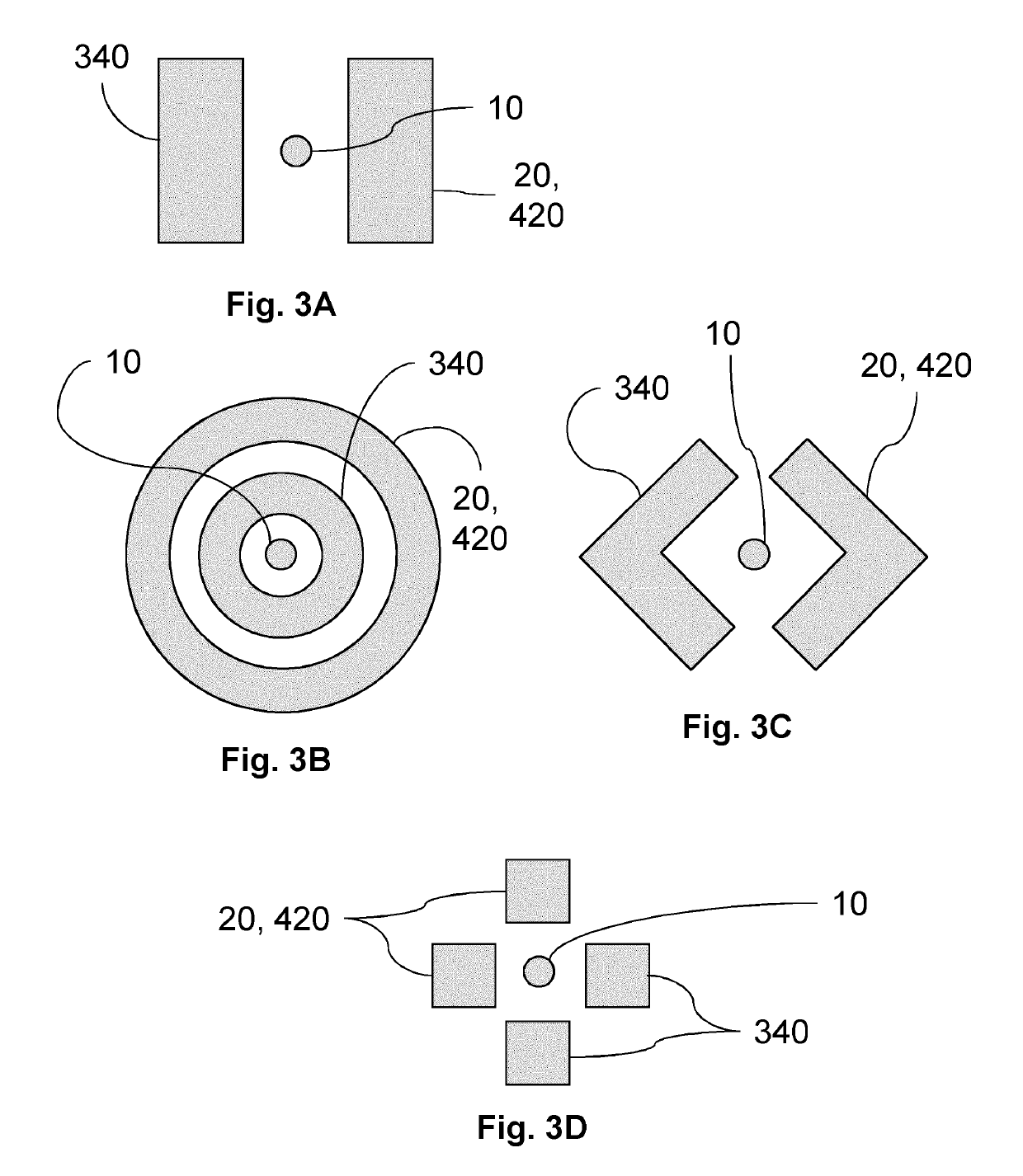Treatment device using R.F. electrical current for heating a first inner region and a second inner region of skin
a treatment device and electrical current technology, applied in the field of skin treatment devices, can solve the problems of increasing the cost of r.f. treatment devices, increasing the risk of operating errors, and complicating any treatment regime, so as to achieve a small skin contact surface area, improve the appearance of skin, and improve the effect of skin appearan
- Summary
- Abstract
- Description
- Claims
- Application Information
AI Technical Summary
Benefits of technology
Problems solved by technology
Method used
Image
Examples
Embodiment Construction
[0050]FIG. 1 schematically shows a first embodiment of a non-invasive skin treatment device 300 comprising a first r.f. treatment electrode 10, a return electrode 340, and a second r.f. treatment electrode 20, each of which have an electrical skin contact area. The device 300 further comprises a first r.f. generator 18 configured and arranged to be operated in bipolar mode by being electrically connected to the first r.f. treatment electrode 10 and the return electrode 340.
[0051]The device 300 also comprises a second r.f. generator 28, configured and arranged to be operated in bipolar mode by being electrically connected to the second r.f. treatment electrode 20 and the return electrode 340. The return electrode 340 is configured and arranged to allow electrical current to pass through both the first inner region 15 and the second inner region 25 of the skin and an outer surface of skin. The second r.f. generator 28 is configured and arranged such that, in use for heating, an r.f. c...
PUM
 Login to View More
Login to View More Abstract
Description
Claims
Application Information
 Login to View More
Login to View More - R&D
- Intellectual Property
- Life Sciences
- Materials
- Tech Scout
- Unparalleled Data Quality
- Higher Quality Content
- 60% Fewer Hallucinations
Browse by: Latest US Patents, China's latest patents, Technical Efficacy Thesaurus, Application Domain, Technology Topic, Popular Technical Reports.
© 2025 PatSnap. All rights reserved.Legal|Privacy policy|Modern Slavery Act Transparency Statement|Sitemap|About US| Contact US: help@patsnap.com



